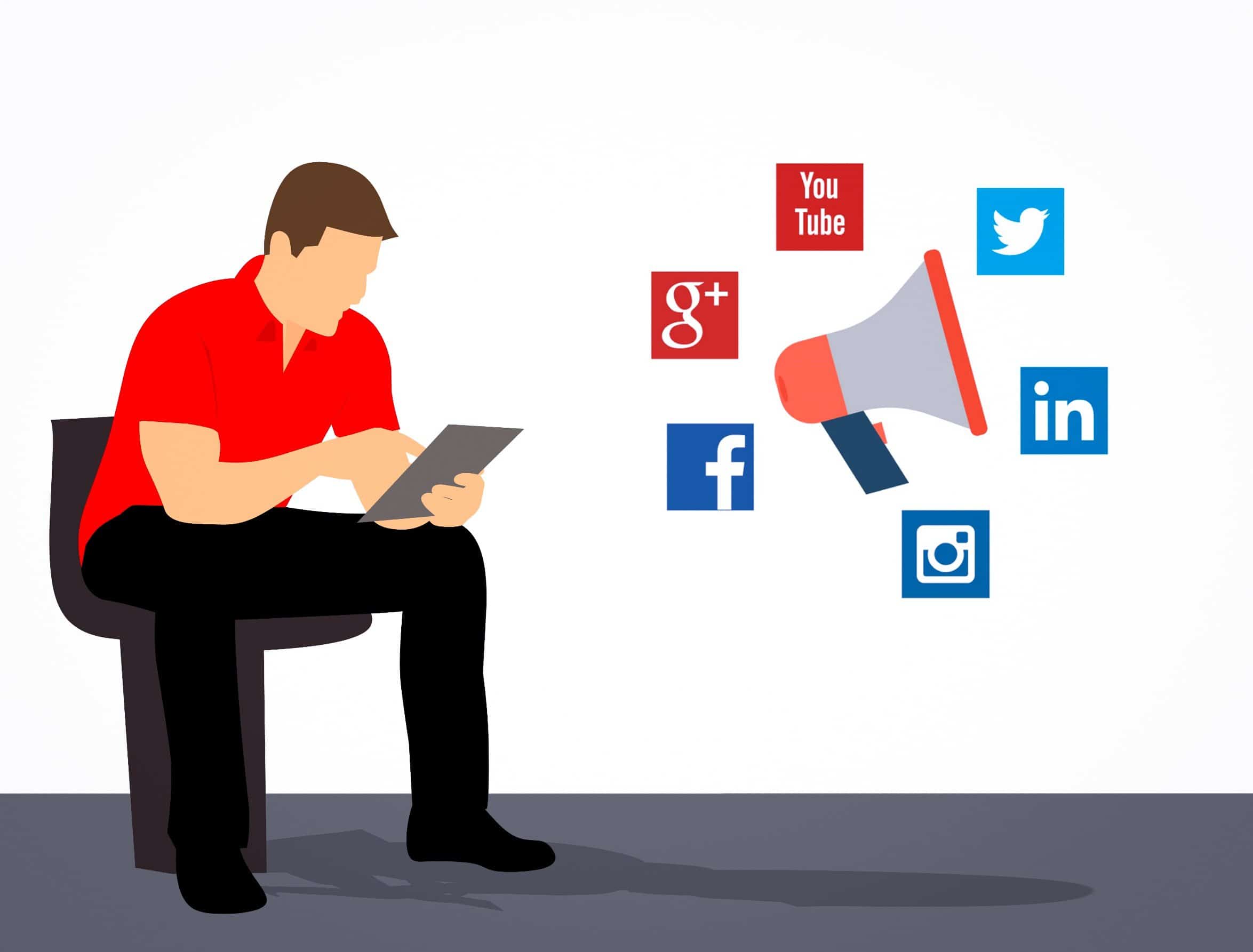One of the main objectives of healthcare email marketing is winning a patient’s trust when it comes to their own personal healthcare. Healthcare providers should care about going the extra mile to prove their expertise and connect with patients. This post will take a look at one of the most affordable and effective ways to build strong bonds with first-time or recurring healthcare facility visitors — email marketing.
5 Benefits of Using Email Marketing in Healthcare
Running email marketing campaigns is a demanding task. You will need to put in a lot of effort into gathering contacts, designing messages, and writing copy. That’s why it makes sense to start planning a campaign only if you are confident it will fuel your healthcare business’s growth.
To understand why it’s a great idea to connect with customers via email, look at the following benefits of healthcare email marketing.
1. People prefer getting healthcare updates via email
If you want to notify a patient about his next appointment, share blood work results, or inform long-term patients about new cafeteria specials, there’s no better channel for breaking the news than email.
Ad Age ran a survey asking its readers how they prefer to keep in touch with healthcare providers: respondents of all age groups chose email as a number-one communication channel.
The open rates of healthcare-related emails are considerably higher than those across other industries — 19.7%.
Modern-day patients are eager to connect with healthcare providers via emails. Marketing teams should jump on the bandwagon.
2. Email marketing campaigns are low-cost
Email marketing’s cost-efficiency is another point in favor of adding the channel to your team’s marketing strategy.
On average, business owners spend $300-500 per month on running campaigns (the cost includes hiring professionals from a marketing agency to track engagement, prepare, and send emails).
What about returns on investment? Believe it or not, email is one of the highest-yielding marketing channels, bringing business owners about $44 in return for every invested dollar.
There’s no need to worry about email marketing campaigns straining your facility’s budget. There are plenty of free tools that allow business owners to launch and track campaigns.
3. Email marketing is a powerful customer retention engine
By definition, customer retention is the company’s ability to encourage customers to choose the brand again.
While most healthcare practitioners are focused on connecting with new prospective patients, the truth is, knowing how to establish a long-lasting bond with existing visitors is a key to stable revenue and a solid reputation (statistically, business owners lose $243 for each visitor who doesn’t come back again).
Here’s how email marketing helps improve customer retention:
- Getting regular updates from healthcare providers reminds patients how important check-ups are and encourage them to plan doctor visits upfront.
- Sharing a valuable newsletter strengthens the institution’s image as a trustworthy healthcare service provider.
- Sending emails regularly helps healthcare marketing managers improve brand awareness and increase patients’ odds of recommending a clinic or a hospital to friends or colleagues.
4. Email marketing helps onboard patients efficiently
Another way to use email marketing to improve healthcare services’ quality is to send letters that answer questions patients are unconfident about asking on the phone. Sending a series of welcome messages to people who booked an appointment is a powerful way to increase a patient’s confidence in the upcoming appointment, eliminating doubt and fear.
Here are the types of messages future patients don’t mind getting from healthcare providers:
- Appointment reminders and notifications help to make it to the appointment on time.
- Post-appointment instructions on medication, care, and a recommended appointment schedule.
- Patient Intake Forms that a patient can fill at home before the appointment, print out, and bring the facility.
5. Email marketing humanizes the company
In healthcare, more than any other industry, people want to deal with people, not organizations. Patients need to be confident that a doctor acts in their best interests, not for the sake of the facility.
Email marketing is a powerful way to attach a human face to the brand. By sending engaging, entertaining messages, healthcare marketers can flip people’s perceptions of medical care, turning it into an enjoyable experience rather than a dreadful necessity.
Email marketing is an excellent opportunity to build relationships with patients on a human-to-human plane.
Step-by-Step Guide to Starting Email Marketing Practices in Healthcare
At first, getting started in email marketing is intimidating. No matter which guides you read, unfamiliar words like “bounce rate,” “deliverability,” “ISP,” “ESP,” and others will be there to confuse you.
The good news is, building an email list and exchanging meaningful letters with patients isn’t that challenging if you take it one step at a time. Here’s a breakdown of simple and straightforward actions that’ll immediately take your email marketing off the ground.
Step #1. Build a subscriber list
This one is obvious — there’s no point in making and sending emails if no one reads them. That’s why the first step marketers and business owners should take when preparing an email campaign is gathering a list of engaged readers.
How can you get emails from people who could be interested in booking an appointment? There are several handy strategies to use
- Add the “Email” field to the paperwork your patients submit when showing up to appointments. After a visitor left the facility, please send him a thank-you email and a summary of the appointment. Later, you can share newsletters and important announcements as well.
- Add a sign-up form to the website. According to statistics, 5% of all Google searches are healthcare-related. Chances are, a considerable fraction of your visitors finds you via the Internet. Make sure each website user has an opportunity to join the email list by adding a subscription form to the home page.
- Share value-driven content (checklists, ebooks, how-to-guides) in exchange for emails. Many healthcare brands go as far as to run social media ads promoting a so-called lead magnet — an ebook, a video course, etc. — with the end goal of collecting as many email addresses as possible. Creating a detailed guide on wellbeing is also a powerful way for business managers to stand against medical misinformation.
Step #2. Segment your audience
Chances are, the people on your subscriber list have different histories of interacting with your product or facility. Some of them might be your first-time patients, others are regulars, yet some are bypassers who visited your website accidentally.
Considering that, it doesn’t make much sense to send every subscriber the same letters? That’s why email marketers use segmentation. Diving the email list into smaller groups based on well-defined selection criteria.
Here’s an example of how a healthcare provider can segment a subscriber base:
| Selection criteria | Examples |
| History of interactions with the company |
|
| Type of appointments |
|
| Types of procedures |
|
| Stage of the sales funnel |
|
These are just a few examples of common audience segmentation criteria healthcare professionals use. Feel free to come up with your subscriber classes if you need more.
However, keep in mind that marketers advise against narrow segments since it makes email marketing much more time- and resource-consuming.
Step #3. Build a toolset
One of the key elements of a successful email marketing campaign is infrastructure. To increase the speed of creating and sending messages, allow for performance monitoring, and ensure scalability, marketing managers use assistive technology when running campaigns.
Here are the platforms healthcare marketers rely on when planning campaigns:
- Large ESP platforms — tools that allow building a campaign, managing a subscriber base, and monitoring performance from scratch.
- Trackers — platforms and extensions that track link clicks, open rates, and other engagement metrics.
- Email testing tools — platforms that allow senders to see how an email looks to a reader by sending a message to a test inbox.
- Email design tools — platforms that host a wide range of newsletter, marketing, or transactional responsive email templates.
It’s up to you to decide whether you want to use a single platform to track email marketing or prefer working with a mix of specialized tools instead. To compare different solutions, be sure to visit platforms like Product Hunt, StackShare, and others.
Step #4. Design your email
Now that you have a list of subscribers eager to hear from you and have armed the team with email marketing tools, it’s time to get creative. There are two major parts to creating an email — copy and design.
Let’s take a look at a few helpful tips that will help you nail both:
Best email design practices:
- Use dynamic content (personalized tags and changing images) to make emails stand out and increase their value.
- Design emails based on the inverted pyramid principle (images followed by text and a button).
- Prefer one-column designs over multi-column layouts for the sake of mobile responsiveness.
- Compress inline images to help emails load faster.

Source: Hearst Bay Area
Best email copy practices:
- Write clear, medium-length subject lines.
- Pay attention to the preview text. Since a sender only sees a short fragment of an email next to the subject line, make sure you start strong and hook a subscriber right away.
- Use simple, conversational language and second-person pronouns. It might be hard to explain complex procedures — however, don’t forget that most newsletter readers likely don’t have an MD degree.
- Group text into short paragraphs to make it “skimmable”.
Step #5. Test, test, test… and send!
When it comes to email marketing, there are quite a few things that can go wrong. An image might not load well. The font size might be too large or too small. The layout might not be mobile-friendly. We couldn’t go on and on.
Although such room for error is overwhelming, there’s no need to panic. Instead, marketers do their best to predict how a message will look to a reader by running A/B testing.
A/B testing is sending two versions of the same letter and choosing the highest-performing email.
What changes should you make in different versions of the same messages?
Through trial and error, marketers understood that the smallest tweaks often make a world of difference. Here’s what the email testing team typically change between version A and B of the same letter:
- Subject lines.
- Sender names.
- Personalization (e.g., using or not using a reader’s first name).
- Replacing buttons with links.
- Imagery (including or deleting visuals).
Other than running A/B testing, it’s equally important to test deliverability by sending the final version of your email to a test inbox and making sure it doesn’t land in promotions or spam.
Once you tested the message thoroughly, it’s time to show it to the world. Go for that “Send” button!
Step #6. Keep an eye on the aftermath
After you shared the email with subscribers, the next step is performance monitoring. By analyzing performance metrics and setting benchmarks, marketers can judge whether a campaign was successful, compare how well it performed if put next to previous campaigns, and look for optimization tips.
Here are the most important metrics to track after launching an email marketing campaign:
- Open rate — how many subscribers opened the email
- Engagement rate — how many people on your list clicked on links, watched in-mail videos, or downloading attachments.
- Bounce rate — how many emails didn’t reach readers.
- Spam complaints — how many readers flagged your letter as spam.
Taking your time to analyze the metric will give a clear understanding of how you can improve future campaigns and build long-lasting connections with visitors and patients.
3 Content Ideas For Healthcare Email Marketing Campaigns
Email marketing gives business owners a sea of design and content opportunities. There are few designs and limitations, so the sky’s the limit to your creativity.
In a case coming up with value-driven content for your next email marketing campaign feels overwhelming, here are a few awesome ideas that’ll get you started and keep readers hooked on your content.
1. Welcome emails
A welcome message is a powerful way to tell new subscribers what type of letters they can expect to get from you. Also, marketers often use welcome emails as a way to thank readers for joining the mailing list.

Source: Mailerlite
2. Value-driven newsletters with tips
As a healthcare services provider, you have a lot of value to share with email subscribers. Make it a habit to pack these insights into easy-to-read newsletters. Creating a roundup of relevant blog posts published on your website is another great idea to win a reader over and boost on-page engagement.

Source: Really Good Emails
3. Testimonials and patient stories
When choosing healthcare providers, we trust online reviews as much as personal recommendations. That’s why marketing managers should take the opportunity to share testimonials for building reputation and patient stories that represent the facility in its best light
To encourage patients to share reviews, you can send a newsletter with a testimonial form.

Source: GCR
Conclusion
These days, winning the game of visitor acquisition and retention in healthcare is all about personalization and connection. Marketing managers are always on the lookout for ways to stay in touch with patients.
Email is one of the most powerful tools company managers can leverage to improve service quality, encourage patients to book follow-up appointments, and get a reputation as a first-class medical care provider.
At first, glance, building an email marketing strategy will be overwhelming. No worries, though. You’ll get used to it over time and create emails that attract readers’ attention.













